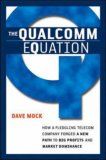The first story was covered by Tuesday’s U-T, which noted that the median sale price of a San Diego County home had dropped to $440,000 in November, off 15% from the peak of $517,500 exactly two years earlier. An accompanying graph shows that prices had returned almost exactly where they were in March 2004 in nominal dollars (actually lower after adjusting for inflation). Rather than gloat, the Voice of San Diego’s resident housing bear used the occasion to predict even further price drops.
 Both the U-T and VoSD speculated about how to interpret the much more rapid price drop today versus 15 years ago. In the 1990s, middle class machinists and other General Dynamics and Rohr workers were getting laid off as California paid the peace dividend. Some dumped their houses quickly to follow their jobs to Arizona or Colorado, but the rest hung on, hoping prices would return to their 1991 peak.
Both the U-T and VoSD speculated about how to interpret the much more rapid price drop today versus 15 years ago. In the 1990s, middle class machinists and other General Dynamics and Rohr workers were getting laid off as California paid the peace dividend. Some dumped their houses quickly to follow their jobs to Arizona or Colorado, but the rest hung on, hoping prices would return to their 1991 peak.Economists have long observed that real estate prices are rapidly marked to the market on the way up, but are “sticky” on the way down — as homeowners hold their house off the market rather than accept a lower price than their reference price. That’s why I graduated form Point Loma High. My parents moved out of San Diego in December 1963, but couldn’t sell their house due to an aerospace recession so they rented it out; by the time prices had come back in spring 1967, my parents were looking to move back to San Diego — so we went back to our home in Point Loma.
The correction in housing prices (however painful for speculators and highly-leveraged first-time homebuyers) will be healthy for the San Diego high-tech economy. For a while, it looked as though San Diego housing prices were approaching the stratospheric levels of Silicon Valley or New York. The problem is, local wages wouldn’t support such prices — San Diego wages and housing prices have always been lower than Los Angeles. When I moved to Silicon Valley in 2002, San Diego prices were rising to Silicon Valley levels, but now at $440k, they are only slightly more than half the Santa Clara County/San Mateo County average of $800-820k, and thus about the same ratio as during much of the 1980s and 1990s.
As it is, housing costs have been a challenge for the San Diego high-tech economy for more than 20 years. Back in 1983, San Diego was up against Austin to land the Microelectronics and Computer Technology (MCC) R&D consortium, but lost due to quality of life issues — primarily housing costs (there’s no beach in Austin, while the climate is considerably harsher). With MCC, Austin won the second largest concentration of semiconductor R&D and manufacturing in North America.
The second story was that the state Department of Finance Wednesday released its estimates as to the net population changes in California for 2006-2007. Newspapers in San Jose and Los Angeles wrote up stories on their respective population shifts. The U-T website (don’t know about the dead tree version) carried only the AP’s generic California population trend story, which notes California’s population is up 11.5% since 2000, at 37.7 million placing us behind Poland but ahead of Canada. The state’s three largest counties — LA (10.3 million), SD (3.1 million) and OC (3.0 million) — now contain 44% of the entire state population.
All the stories noted that California is gaining population because births exceed deaths, and immigration from foreign countries exceeds the net out-migration by Californians to other states. The stories also noted that the fastest growing county is Riverside County (and the rest of the Inland Empire), up 3.3% from July 2006 to July 2007. Of course, the common denominator for both domestic migration patterns is housing affordability: equity-rich Californians feeling to cheaper parts of the state, or to other states.
Looking at the state’s raw numbers, 38 of California’s 58 counties had a net in-migration. However, the out-migration (led by 114,638 fleeing L.A. county) meant that the state overall lost 88,761 people to the rest of the U.S. But with 9 people coming from overseas for every 4 moving inland, the net effect is that the state continues to grow.
The in-migration estimates for San Diego County made it 4th in the state, with 2,982 new residents from elsewhere in the U.S. It was second overall (after Riverside) in terms of total net immigration (foreign and domestic) with a gain of 16,049.
My guess is that much of the in-migration to San Diego is from elsewhere in California, whether from LA, Orange (21,935 people leaving) or the Bay Area (all but 2 counties losing population). Again, housing affordability must be a key factor. Of course, this doesn’t say anything about jobs, but (except for retirees) people follow jobs and housing.
I don’t know why the U-T didn’t think the numbers were worth studying. Back when I was a beat reporter, we welcomed the chance to take some hard data like this, spice it up with a few quotes to come up with an easy story about the state of the local economy.







![[China Mobile dealer]](https://blogger.googleusercontent.com/img/b/R29vZ2xl/AVvXsEjM6YL5kC2MLcCuphPzBJaiuqGUct769sDhNRCI9K8C-sj8BeO84HvQB2PXnAlcsw05hwqQWNh0i8NTSQFgUXptxSde7uNkNAYMCvpO3uLcLEZZPwWnC9uq8eak4WCvAmUstfwKpyIlzHRG/s400/ChinaMobile.jpeg)

![[Building 33] [Building 33]](http://www.spawar.navy.mil/sti/publications/pubs/td/1940/photos/fig3.gif)

![[LA GMR panel] [LA GMR panel]](http://farm1.static.flickr.com/216/525350006_74414e5c47.jpg)
![[Star Wars ’77] [Star Wars ’77]](http://www.starstore.com/acatalog/Star_Wars-one-sheet_L-01.jpg)
